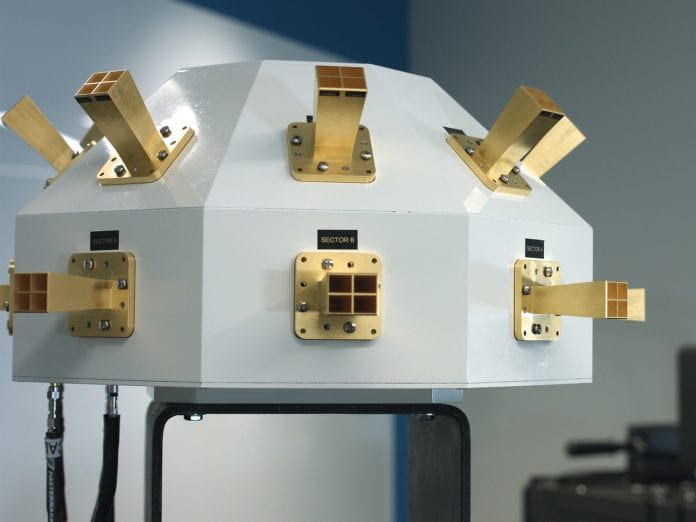“Porcupine” 5G channel sounder characterizes millimeter-wave frequencies.
National Instruments and AT&T said they have developed a proprietary channel sounder for characterizing the millimeter-wave frequencies that are expected to pay a primary role in “5G” wireless systems.
Channel sounders are used to explore the characteristics of particular frequencies in various environments in order to document propagation behavior. As the wireless industry moves toward the use of mm wave spectrum in support of 5G services, new models are needed for the spectrum’s characteristics to form a foundation for network design and planning.
The Porcupine, as the new 5G channel sounder has been dubbed internally, is designed to conduct real-time measurement and monitoring of channel parameters and is based on NI’s millimeter wave Transceiver System. It supports angle-of-arrival measurements – an important factor for the use of beamsteering in 5G. It is the first of its kind and conducts AoA measurements within 150 milliseconds, according to NI. The system also displays test results in real time, whereas traditional systems using pan-tilt units could take 15 minutes or more and involve data capture and then post-processing before producing a single test result in that time – while the Porcupine can produce around 6,000 measurements in 15 minutes, NI said. The speed and accuracy at which it can capture 5G channel data mean it can also be used for drive testing, the two companies added, and thus could be used in testing the use of millimeter wave frequencies for connected or autonomous vehicle use cases.
NI stated that “the capability of real-time measurement eliminates the need to repeat experiments or to adjust the equipment to take multiple measurements from one location. Since parameter extraction is done in real time, the integrity of collected data can also be evaluated in real time. Thus inaccurate data can be replaced immediately with a new set of measurements at the time of evaluation. Using other approaches an entire evaluation day could potentially be lost if the collected data is post-processed.”
The Porcupine 5G channel sounder work “will likely play a role in AT&T’s future 5G deployment, through the creation of accurate models that help map out the details of where AT&T places its network equipment to provide customers with the best possible mobile experience,” according to the two companies.
“Utilizing millimeter wave spectrum for mobile 5G presents many challenges which we believe can be solved,” said Marachel Knight, SVP of wireless network architecture and design for AT&T, in a statement. “We identified early on that designing and real-time monitoring of millimeter wave spectrum needs to be much more precise than today’s cellular systems. With the help of NI’s flexible hardware and software platform, AT&T developed a new type of channel sounder and we’re using it to develop highly advanced models that will work for our network.”
Watch an interview below with Eric Starkloff, EVP of global sales and marketing for NI, where he gives an overview of his keynote at IEEE’s Radio Wireless Week on test and prototyping for the internet of things and 5G, with comments on millimeter wave:
[embedyt] https://www.youtube.com/watch?v=1qItIGKQkHE[/embedyt]

